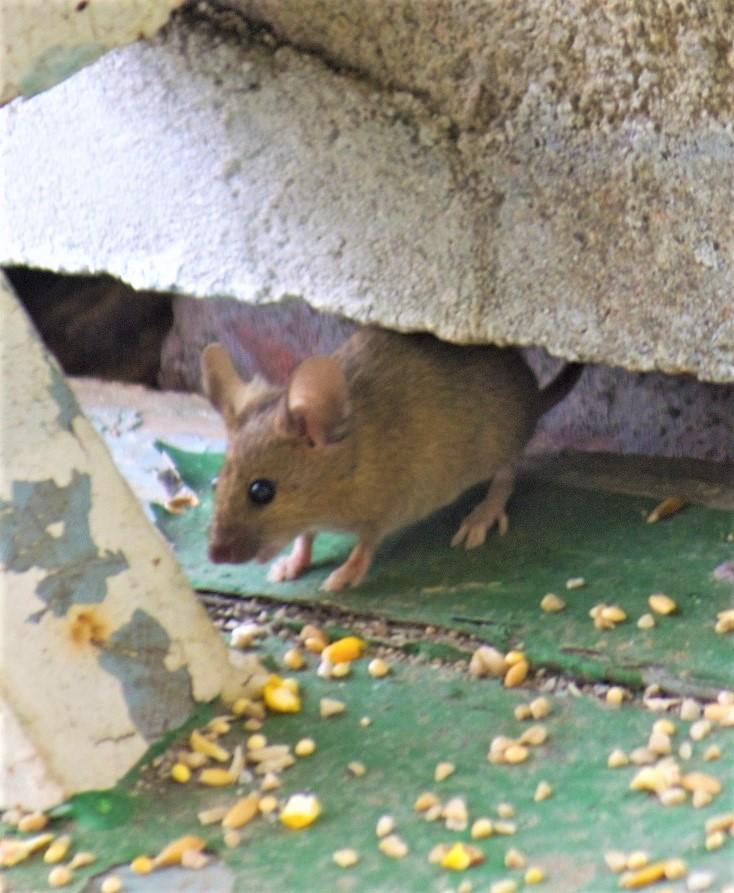The house mouse is one of the most common rodent pests found around the world, particularly in urban areas, and has long been known for its ability to spread infectious diseases to humans. Now, a new study by researchers at Columbia University indicates that the unwelcome house guest also carries several species of pathogenic bacteria and antibiotic resistance genes.
In a study today in mBio, the researchers report that a genetic analysis of droppings collected from house mice in New York City detected several types of bacteria capable of causing gastrointestinal disease, including Shigella, Salmonella, Escherichia coli, and Clostridium difficile. They also found genes that confer resistance to fluoroquinolones, beta-lactam antibiotics, and methicillin.
Overall, more than a third of mice carried at least one potentially pathogenic bacterium, and nearly a quarter carried at least one antibiotic resistance gene.
Although the authors of the study can't say whether the bacterial strains they identified in the mice are contributing to human illness, they say the potential for mice to transmit these pathogens should be explored.
"Our study raises the possibility that serious infections—including those resistant to antibiotics—may be passed from these mice to humans, although further research is needed to understand how often this happens, if at all," lead study author Simon Williams, BSc, a research scientist at Columbia University Mailman School of Public Health's Center for Infection and Immunity, said in a university press release.
Wide range of bacteria, resistance elements
For the study, Williams and his colleagues trapped 416 house mice in predominantly residential buildings across New York City and then conducted genetic screening of fecal pellets and anal swabs to determine the prevalence of bacteria and antibiotic resistance genes. Polymerase chain reaction (PCR) screening identified a wide range of gastrointestinal disease-causing bacteria.
They found Shigella/enteroinvasive E coli in 14% of the mice (60/416), Clostridium perfringens in 12% (48/416), atypical enteropathogenic E coli in 4% (18/416), Clostridium difficile in 4% (18/416), and Salmonella spp. in 3% (13/416). Among the Salmonella species identified was Salmonella enterica, the leading cause of bacterial food poisoning outbreaks in the United States. In addition, screening detected Leptospira DNA in the kidney tissue of 4% of the mice (14/378).
PCR analysis also identified a diverse array of antibiotic resistance genes, with the beta-lactamase gene blaACT/MIR the most frequently detected (21%, 86/416), followed by qnrB (7%, 30/416), blaSHV (2%, 8/416), and mecA (1%, 4/416).
Thirty-seven percent of the mice (153/416) were found to harbor at least one potentially pathogenic bacterium, and 23% (96/416) were positive for at least one resistance gene. One mouse harbored five types of potentially pathogenic bacteria, while six mice each carried three different resistance genes.
While the findings suggest that house mice may be a reservoir for pathogenic bacteria and antibiotic resistance elements, the data from the study do not provide any evidence that these bacterial pathogens or resistance genes were passed on to humans. But Tara Smith, PhD, an epidemiology professor at Kent State University and expert in zoonotic infections who was not involved in the study, said that because mice are frequent residents of homes and apartments, they can easily contaminate our spaces and cause disease.
"Many of the species they identified cause gastrointestinal infections in humans and could contaminate food products or food preparation areas if mouse droppings are present," Smith told CIDRAP News. "The antibiotic resistant genes they carry can also be transmitted, either as part of the genetic material of pathogens or by commensal bacteria that don't always make us sick, but could exchange resistance genes with our own gut bacteria."
The researchers also found 36 viruses in the mice, a finding they report in a separate study published in mBio. None of the viruses, however, are known to infect humans.
See also:
Apr 17 mBio mouse bacteria study
Apr 17 mBio mouse viruses study
Apr 17 Columbia University press release























